Track-before-Detect Algorithm for Underwater Diver Based on Knowledge-Aided Particle Filter
Abstract
1. Introduction
2. System Models
2.1. Sonar Measurement Model
2.2. Target State Transition Model
3. Algorithm Development
3.1. The Construction of the Diver Multi-Directional Movement Model Set
3.2. The Acquisition of the Measurement Data Likelihood Function
3.3. Algorithm Steps
4. Numerical Results
4.1. Evaluation Indicators
4.2. Simulation Experiments
4.3. Sea Trial Experimental Data Processing
5. Conclusions
Author Contributions
Funding
Institutional Review Board Statement
Informed Consent Statement
Conflicts of Interest
References
- Barniv, Y. Dynamic programming solution for detecting dim moving targets. IEEE Trans. Aerosp. Electron. Syst. 1985, 21, 144–156. [Google Scholar] [CrossRef]
- Davey, S.J.; Rutten, M.G.; Cheung, B. Using phase to improve track-before-detect. IEEE Trans. Aerosp. Electron. Syst. 2012, 48, 832–849. [Google Scholar] [CrossRef]
- Grossi, E.; Lops, M.; Venturino, L. A novel dynamic programming algorithm for track-before-detect in radar systems. IEEE Trans. Signal Process. 2013, 10, 2608–2619. [Google Scholar] [CrossRef]
- Yi, W.; Morelande, M.R.; Kong, L.; Yang, J. An efficient multi-frame track-before-detect algorithm for multi-target tracking. IEEE J. Sel. Top. Sign. Process. 2013, 7, 421–434. [Google Scholar] [CrossRef]
- Yan, B.; Xu, L.; Li, M.; Yan, J.Z. Track-before-detect algorithm based on dynamic programming for multi-extended-targets detection. IET Signal Process. 2017, 11, 674–686. [Google Scholar] [CrossRef]
- Zheng, D.; Wang, S.; Qin, X. A dynamic programming track-before-detect algorithm based on local linearization for non-gaussian clutter background. Chin. J. Electron. 2016, 25, 583–590. [Google Scholar] [CrossRef]
- Yi, W.; Fang, Z.; Li, W.; Hoseinnezhad, R.; Kong, L. Multi-frame track-before-detect algorithm for maneuvering target tracking. IEEE Trans. Veh. Technol. 2020, 69, 4104–4118. [Google Scholar] [CrossRef]
- Zhu, Y.; Li, Y.; Zhang, N.; Zhang, Q. Candidate-plots-based dynamic programming algorithm for track-before-detect. Digit. Signal Process. 2022, 123, 103458. [Google Scholar] [CrossRef]
- Yan, B.; Xu, N.; Zhao, W.B.; Xu, L.P. A three-dimensional Hough transform-based track-before-detect technique for detecting extended targets in strong clutter backgrounds. Sensors 2019, 19, 881. [Google Scholar] [CrossRef]
- Moyer, L.R.; Spark, J.; Lamanna, P. A Multi-dimensional Hough transform-based track-before-detect technique for detecting weak targets in strong clutter backgrounds. IEEE Trans. Aerosp. Electron. Syst. 2011, 47, 3062–3068. [Google Scholar] [CrossRef]
- Li, Y.; Wang, G.; Zhang, X.; Yu, H. A Hough transform TBD algorithm in three-dimensional space for hypersonic weak target under range ambiguity. J. Astro. 2017, 38, 979–988. [Google Scholar]
- Tian, M.; Chen, Z.; Wang, H.; Liu, L. An intelligent particle filter for infrared dim small target detection and tracking. IEEE Trans. Aerosp. Electron. Syst. 2022, 1, 1–17. [Google Scholar] [CrossRef]
- Zhang, G.; Ma, L.; Ge, J.; Zhang, D.; Liu, G.; Zhang, F. Dim Target Track-Before-Detect based on Particle Filtering. In Proceedings of the IEEE Conference on Industrial Electronics and Applications (ICIEA), Kristiansand, Norway, 9–13 November 2020; pp. 1588–1593. [Google Scholar]
- Jia, L.; Rao, P.; Zhang, Y.; Su, Y.; Chen, X. Low-SNR infrared point target detection and tracking via saliency-guided double-stage particle filter. Sensors 2022, 22, 2791. [Google Scholar] [CrossRef] [PubMed]
- Bao, Z.; Jiang, Q.; Liu, F. Multiple model efficient particle filter based track-before-detect for maneuvering weak targets. J. Syst. Eng. Electron. 2020, 31, 647–656. [Google Scholar]
- Guerraou, Z.; Khenchaf, A.; Comblet, F.; Leouffre, M.; Lacrouts, O. Particle Filter Track-Before-Detect for Target Detection and Tracking from Marine Radar Data. In Proceedings of the IEEE Conference on Antenna Measurements & Applications (CAMA), Kuta, Indonesia, 23–25 October 2019; pp. 304–307. [Google Scholar]
- Huang, C. Simultaneously Track and Detect Using Auxiliary Multiple-Model Particle Filter. In Proceedings of the IEEE 9th Joint International Information Technology and Artificial Intelligence Conference (ITAIC), Chongqing, China, 11–13 December 2020; pp. 14–18. [Google Scholar]
- Awadhiya, R. Particle Filter Based Track Before Detect Method for Space Surveillance Radars. In Proceedings of the IEEE Radar Conference (RadarConf22), New York, NY, USA, 21–25 March 2022; pp. 1–6. [Google Scholar]
- Kreucher, C.; Bell, K.L. A geodesic flow particle filter for nonthresholded radar tracking. IEEE Trans. Aerosp. Electron. Syst. 2018, 54, 3169–3175. [Google Scholar] [CrossRef]
- Jing, C.; Lin, Z.; Li, J. Detection and tracking of an underwater target using the combination of a particle filter and track-before-detect. In Proceedings of the OCEANS, Shanghai, China, 10–13 April 2016; pp. 1–5. [Google Scholar]
- Xu, L.; Liu, C.; Yi, W.; Li, G.; Kong, L. A particle filter based track-before-detect procedure for towed passive array sonar system. In Proceedings of the IEEE Radar Conference (RadarConf), Seattle, DC, USA, 8–12 May 2017; pp. 1460–1465. [Google Scholar]
- Northardt, T.; Nardone, S.C. Track-before-detect bearings-only localization performance in complex passive sonar scenarios: A case study. IEEE J. Ocean. Eng. 2019, 44, 482–491. [Google Scholar] [CrossRef]
- Yi, W.; Fu, L.; García-Fernández, Á.F.; Xu, L.; Kong, L. Particle filtering based track-before-detect method for passive array sonar systems. Signal Process. 2019, 65, 303–314. [Google Scholar] [CrossRef]
- Zhang, D.; Gao, L.; Sun, D.; Teng, T. Soft-decision detection of weak tonals for passive sonar using track-before-detect method. Appl. Acoust. 2022, 188, 108549. [Google Scholar] [CrossRef]
- Xiong, Y.; Peng, J.; Ding, M.; Xue, D. An extended track-before-detect algorithm for infrared target detection. IEEE Trans. Aerosp. Electron. Syst. 1997, 33, 1087–1092. [Google Scholar] [CrossRef]
- Jiang, H.; Yi, W.; Kirubarajan, T.; Kong, L.; Yang, X. Multiframe radar detection of fluctuating targets using phase information. IEEE Trans. Aerosp. Electron. Syst. 2017, 53, 736–749. [Google Scholar] [CrossRef]
- Krim, H.; Viberg, M. Two decades of array signal processing research: The parametric approach. IEEE Signal Process. Mag. 1996, 13, 67–94. [Google Scholar] [CrossRef]
- Hesamian, G.; Akbari, M.G. Nonparametric kernel estimation based on fuzzy random variables. IEEE Trans. Fuzzy Syst. 2017, 25, 84–99. [Google Scholar] [CrossRef]
- Patel, R.D.; Nazaripouya, H.; Akhavan-Hejazi, H. Non-parametric probabilistic demand forecasting in distribution grids; kernel density estimation and mixture density networks. In Proceedings of the 52nd North American Power Symposium (NAPS), Tempe, AZ, USA, 11–13 April 2021; pp. 1–5. [Google Scholar]
- Zhou, Y.; Wang, T.; Hu, R.; Su, H.; Liu, Y.; Liu, X.; Suo, J.; Snoussi, H. Multiple kernelized correlation filters (MKCF) for extended object tracking using x-band marine radar data. IEEE Trans. Signal Process. 2019, 67, 3676–3688. [Google Scholar] [CrossRef]
- Zhou, Y.; Su, H.; Tian, S.; Liu, X.; Suo, J. Multiple kernelized correlation filters based track-before-detect algorithm for tracking weak and extended target in marine radar systems. IEEE Trans. Aerosp. Electron. Syst. 2022, 3411–3426. [Google Scholar] [CrossRef]
- Li, Y.; Gao, P.; Tang, B.; Yi, Y.; Zhang, J. Double Feature Extraction Method of Ship-Radiated Noise Signal Based on Slope Entropy and Permutation Entropy. Entropy 2022, 24, 22. [Google Scholar] [CrossRef] [PubMed]
- Li, Y.; Tang, B.; Yi, Y. A novel complexity-based mode feature representation for feature extraction of ship-radiated noise using VMD and slope entropy. Appl. Acoust. 2022, 196, 108899. [Google Scholar] [CrossRef]

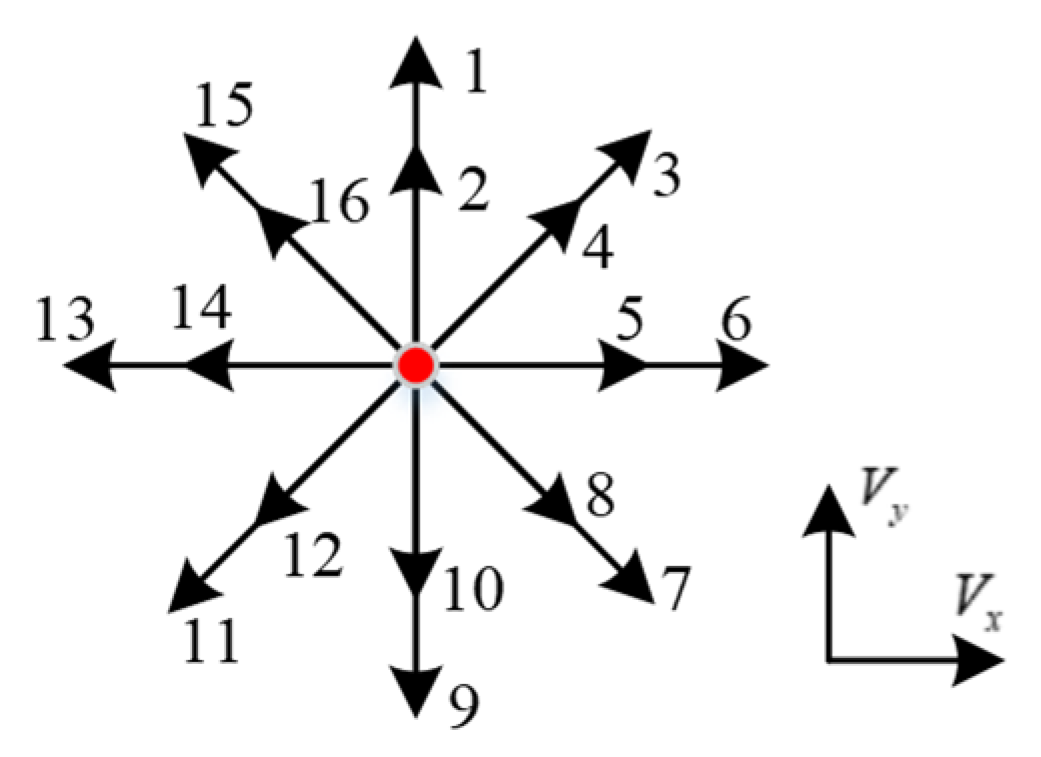



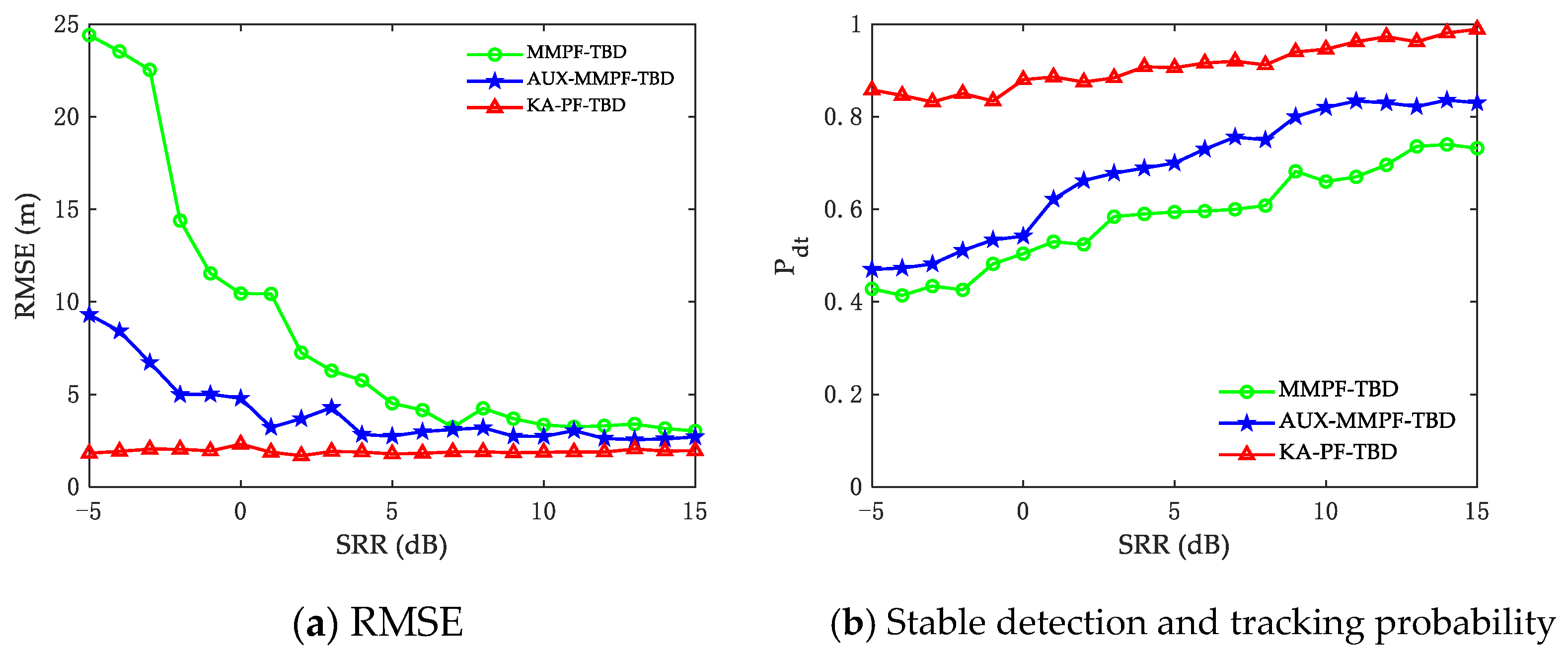
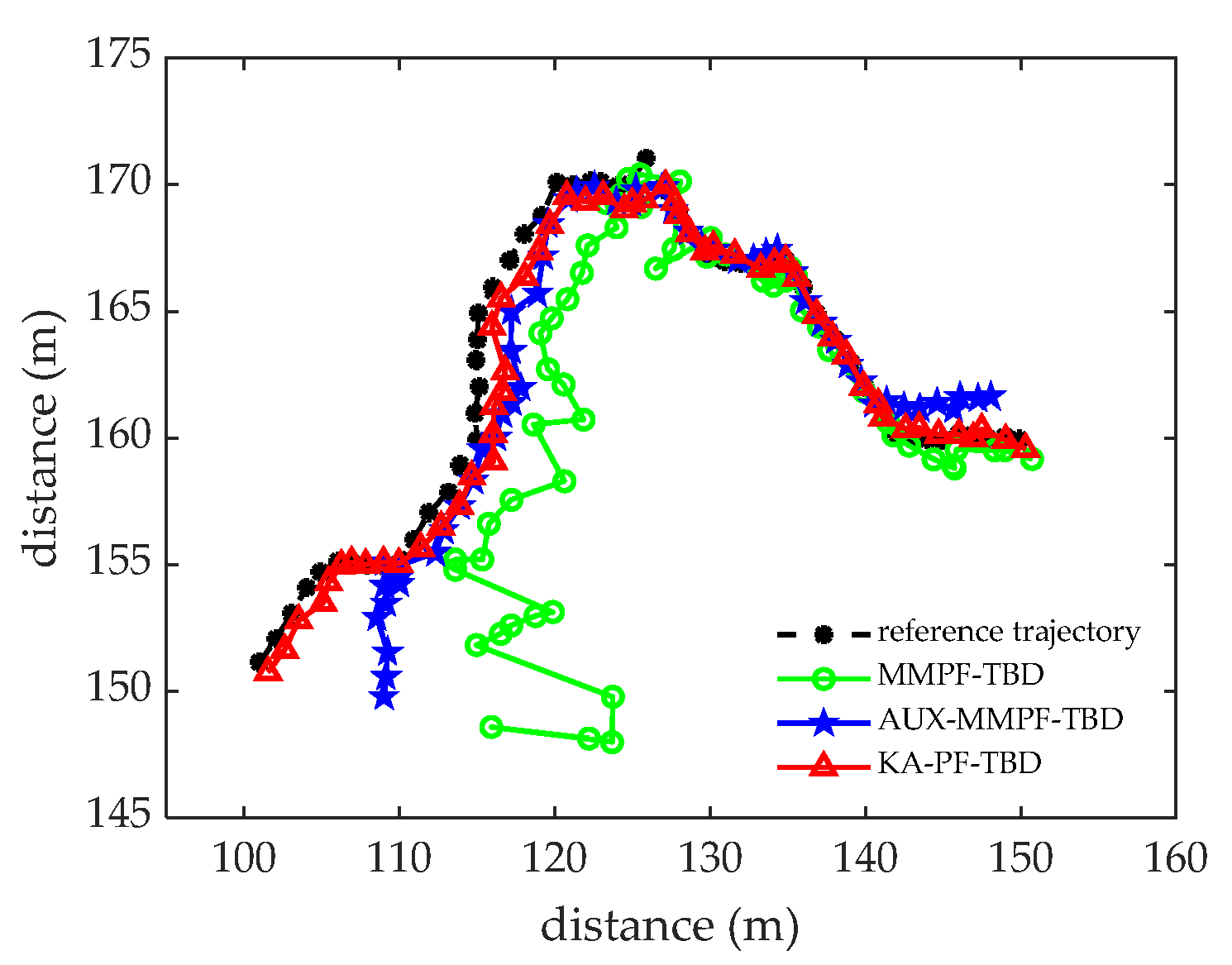

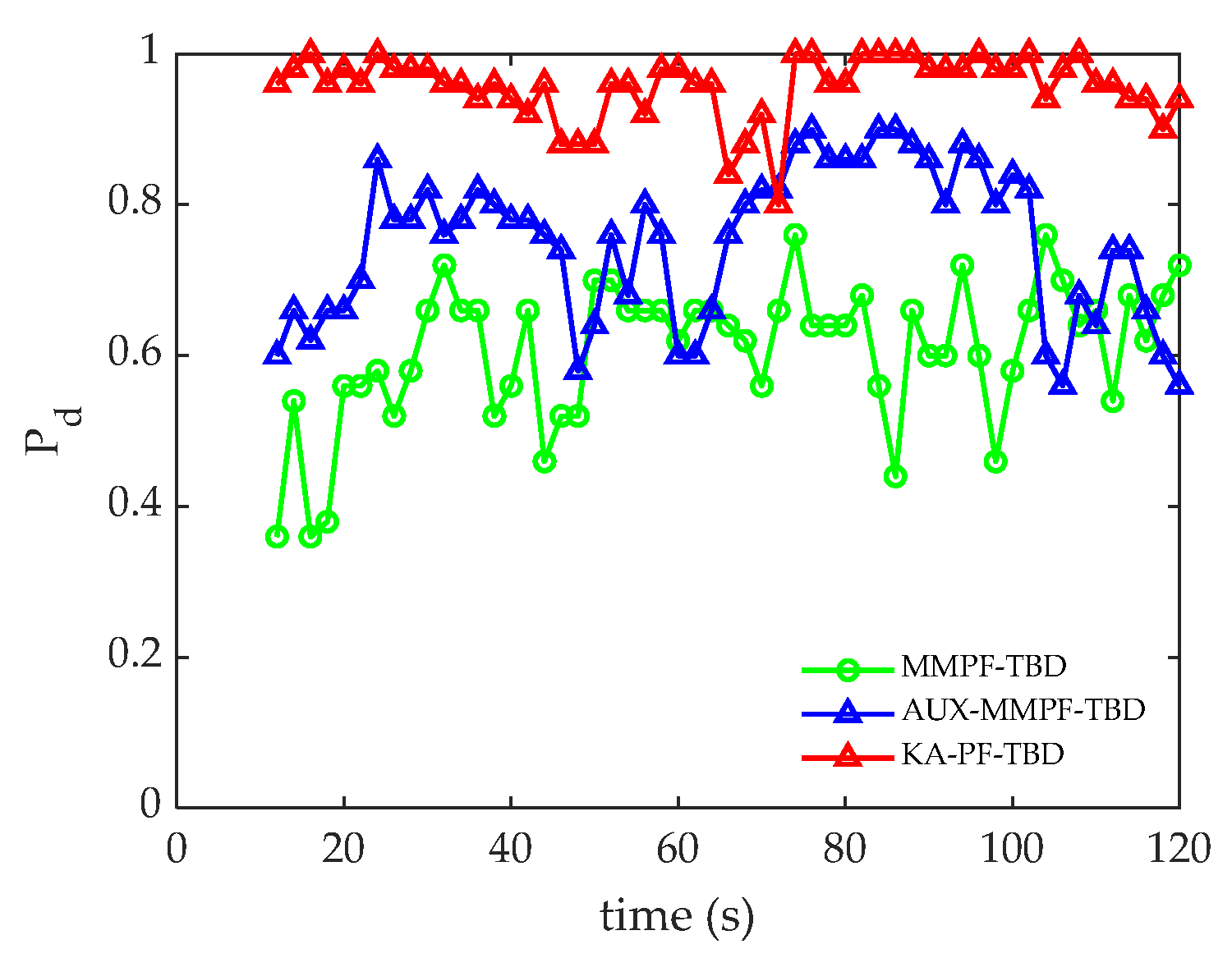


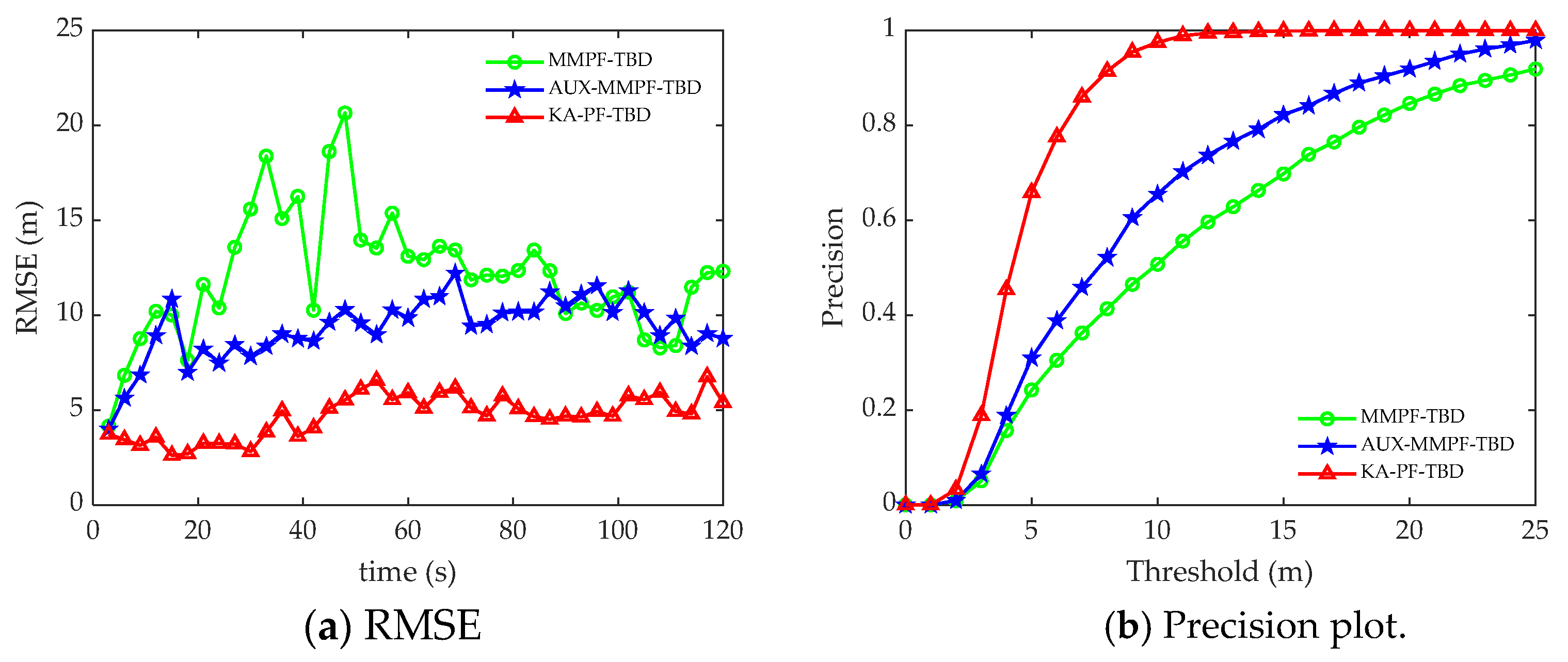
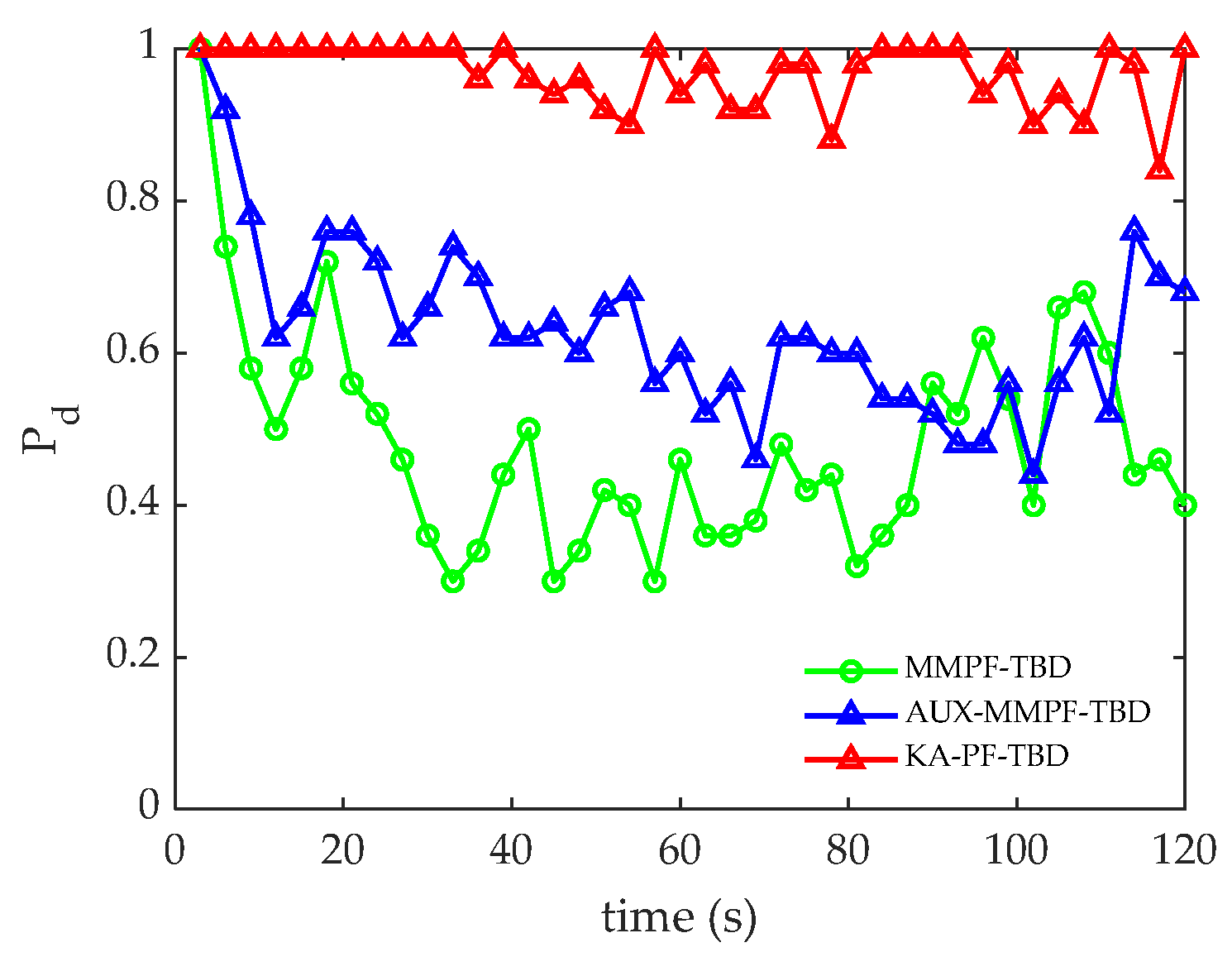
| Setup 1 | Setup 2 | Setup 3 | Setup 4 | Setup 5 | Setup 6 | |
|---|---|---|---|---|---|---|
Publisher’s Note: MDPI stays neutral with regard to jurisdictional claims in published maps and institutional affiliations. |
© 2022 by the authors. Licensee MDPI, Basel, Switzerland. This article is an open access article distributed under the terms and conditions of the Creative Commons Attribution (CC BY) license (https://creativecommons.org/licenses/by/4.0/).
Share and Cite
Yue, W.; Xu, F.; Xiao, X.; Yang, J. Track-before-Detect Algorithm for Underwater Diver Based on Knowledge-Aided Particle Filter. Sensors 2022, 22, 9649. https://doi.org/10.3390/s22249649
Yue W, Xu F, Xiao X, Yang J. Track-before-Detect Algorithm for Underwater Diver Based on Knowledge-Aided Particle Filter. Sensors. 2022; 22(24):9649. https://doi.org/10.3390/s22249649
Chicago/Turabian StyleYue, Wenrong, Feng Xu, Xiongwei Xiao, and Juan Yang. 2022. "Track-before-Detect Algorithm for Underwater Diver Based on Knowledge-Aided Particle Filter" Sensors 22, no. 24: 9649. https://doi.org/10.3390/s22249649
APA StyleYue, W., Xu, F., Xiao, X., & Yang, J. (2022). Track-before-Detect Algorithm for Underwater Diver Based on Knowledge-Aided Particle Filter. Sensors, 22(24), 9649. https://doi.org/10.3390/s22249649







